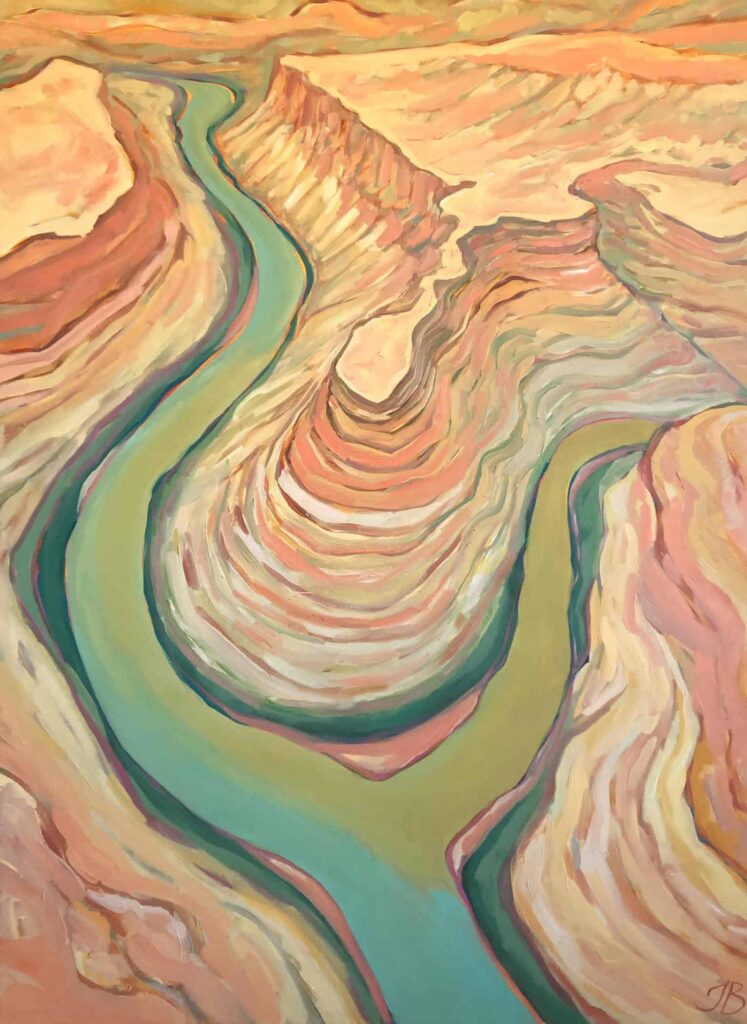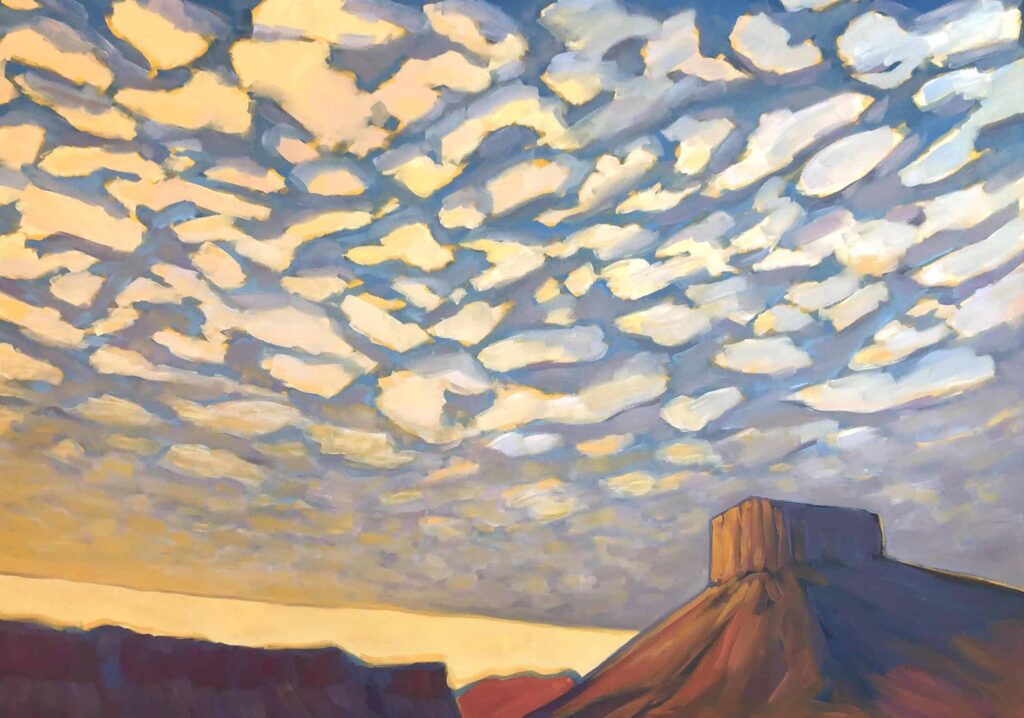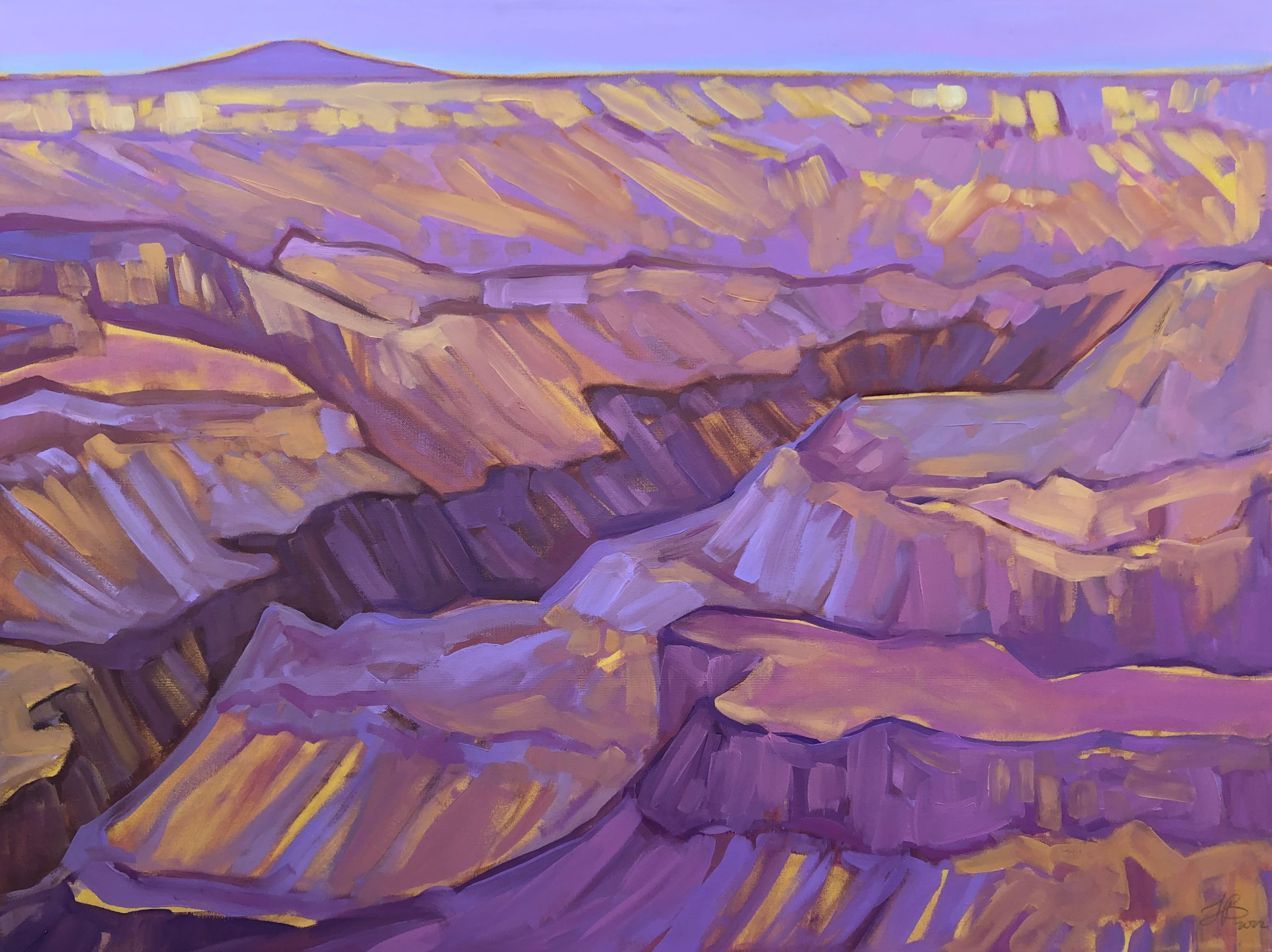Some information may be outdated.
Julia Buckwalter has long been a part of the local Moab artist community: for years, her large-scale paintings have been on display in shops and galleries around town, and last year, she was the Southeast Utah Group Artist in the Parks. Now, her biggest exhibit, “Journey to the Desert,” which features 17 paintings, is on display until Dec. 14 at the John Wesley Powell River History Museum in Green River.
“If anything, I just want the paintings to contribute to someone else’s sense of connection, and the thought of, where do we go from here with the desert?” Buckwalter said. “For those of us who have lived here for years, it’s like, ‘I love the desert, I appreciate it, I love what it gives me. But where do we go from here? What can I do? Where’s my place, and my position, in the landscape?’”
The exhibit follows the story of John Wesley Powell’s expedition from the Green River to the Moab area. It starts with the painting “Winter in Green River,” which captures the quiet bliss of a snowy riverbank; takes the viewer down the Green River through “Kiss in Canyonlands,” “Violet Night,” and “Confluence”; then through Arches and Canyonlands national parks with the paintings “Double Arch” and “Cloudchaser”; and finally ends with three paintings that could be snapshots taken by any southwest visitor—“Raising Sand,” which depicts Agathla Peak seen through a car window, “Ceremony,” which depicts a cow skull lying on slickrock, and “The Drifter,” which depicts a bird flying through the clouds.

Buckwalter always knew she wanted to live in and paint the desert, she said, but recently she’s been thinking deeply about her own desert story—what it means to live in and love the desert, and what it means to create art depicting that love, especially in the face of threats to the landscape.
“As an artist, I think everyone who’s creating work that responds to the desert right now, and everyone in general who is connected to the desert, we’re all going through this new thinking of, what does the desert mean to me now in terms of, ‘what is the desert’s timeline? And what is my timeline within it as a resident or as a human?’” she said.
Buckwalter has been reflecting more on conservation: on how she and others who love the desert can take care of it. The pandemic lockdowns sped up that thinking for her, she said, in seeing how well the environment seemed to thrive when humans weren’t able to touch it—a study published in 2021 in the National Library of Medicine showed that during the pandemic, water, noise, and air pollution decreased in most major cities across the globe.
“Me painting an oil painting does not have a direct impact on an animal herd or stretch of landscape, in terms of conservation,” Buckwalter said. “But if people love these places, and if looking at the paintings reminds them of that deep connection and love, it might help them care more—that’s how I’ve been thinking about it more than ever now.”

The paintings in the exhibit portray Buckwalter’s iconic style: dreamy landscapes with vivid colors and gauzy clouds. But one, “Man is an Island,” is what Buckwalter calls a sketch painting—it’s done in sepia hues and is the only painting that depicts a person. It’s the sixth painting in the exhibit’s lineup, and acts as a pausing point just before the viewer reaches the confluence painting (titled “Confluence”).
“I wanted it to feel like a pausing moment, a little break in the show where you can stop and think before you rush on through the rest,” she said. She originally thought about putting the painting at the end of the show, next to “Ceremony,” to show the image of a man who no longer exists and an animal who no longer exists. But she instead decided to end the exhibit with “The Drifter,” to inspire thoughts of, ‘where do we go from here?’
“The ‘Man is an Island’ title comes from a song by Emmylou Harris. There’s something poetic and somber and bittersweet and melancholy in it that I felt was necessary to be in a show about a desert that is changing because of us,” Buckwalter said. “… I think every artist in Moab, myself included, we have to think about how our work contributes to the consuming of a place. How might we want to evolve in ways that express awareness?”
The exhibit is on display at the John Wesley Powell River History Museum in Green River until Dec. 14, and there will be a closing ceremony in early December.
Appreciate the coverage? Help keep local news alive.
Chip in to support the Moab Sun News.





